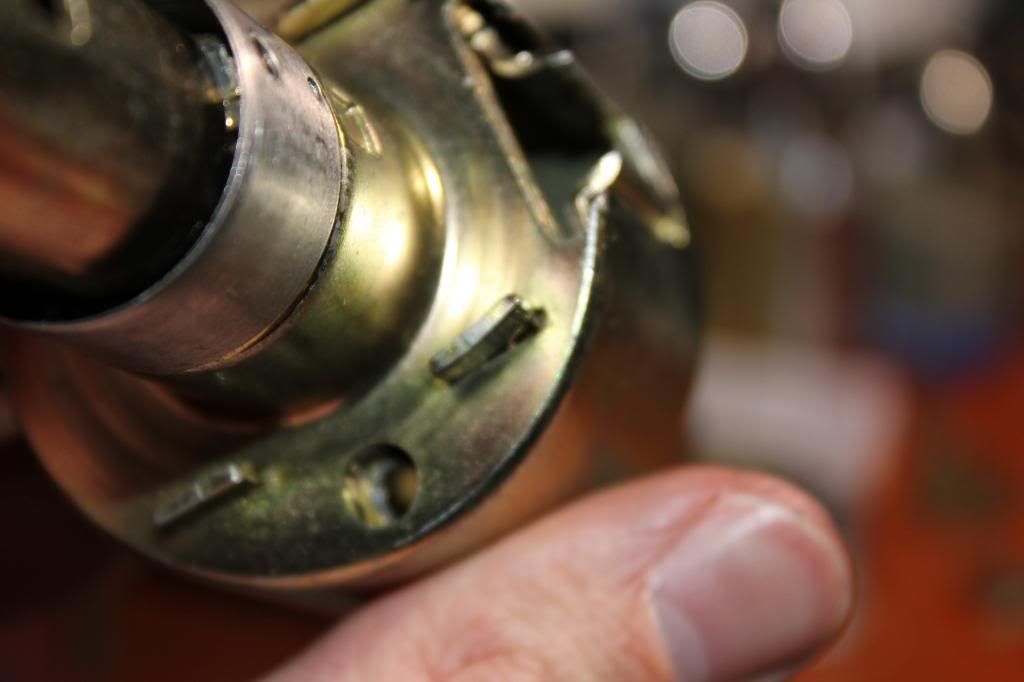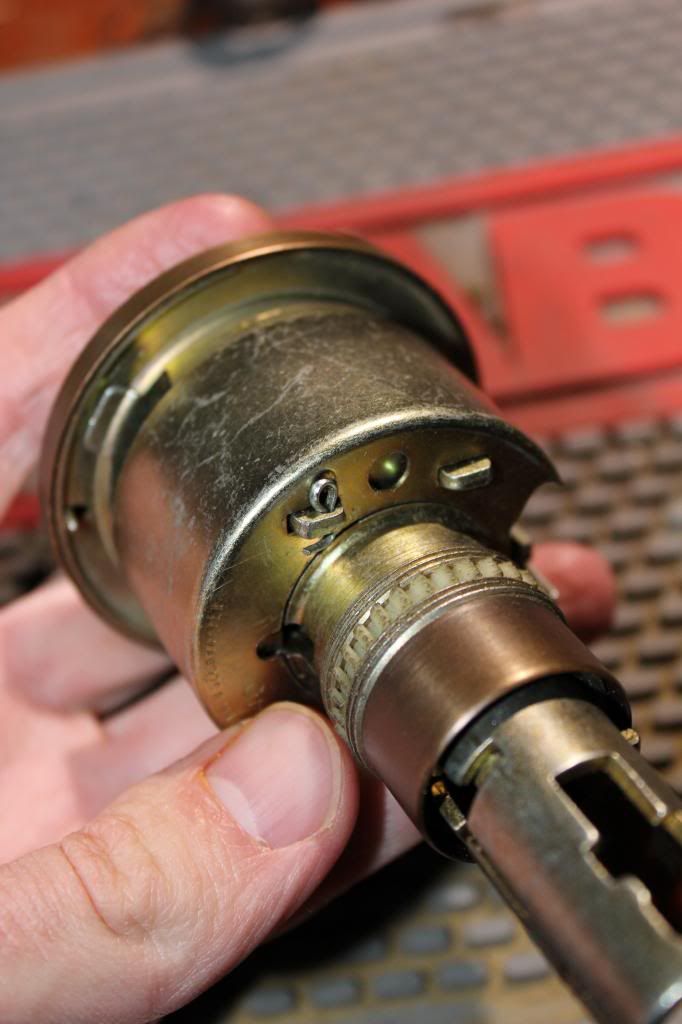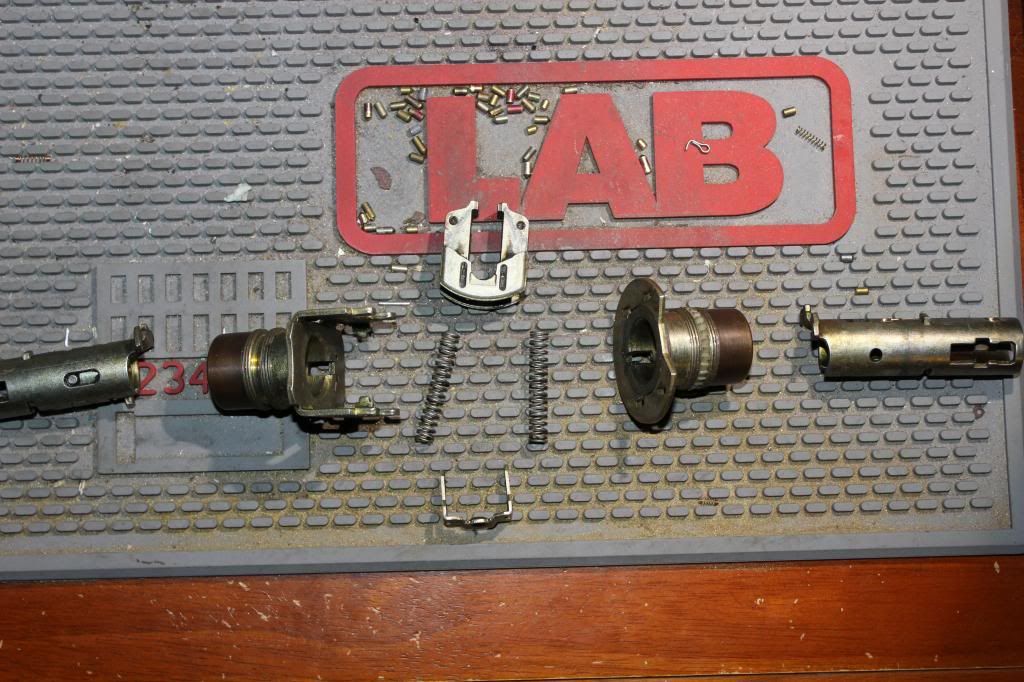Recently I purchased two different knob sets at an architectural salvage store. After searching the internet for service manuals I was able to ascertain that one knob is a Schlage D70PD classroom function knob. The other knob took me a little longer to identify, but after searching this site, I determined that it is an Arrow M-Series knob with an entrance/office function. The Arrow knob came with a Corbin core and a Sargent deadlatch, which threw me off, as I initially began searching for images and literature for the Corbin Russwin CK4200 and Sargent 6-line knobs, but the knobs depicted did not match the one I had. Also, due to the Corbin core being different from the standard Arrow core, I had to grind down one side of the tailpiece with my Dremel tool in order for the outside knob to slide on completely.
First let's compare knob removal. To remove the exterior knob on the Arrow the knob must be unlocked. It must then be rotated approximately 45 degrees clockwise, aligning the spring-loaded catch with the poke hole. From there, insert a small screwdriver and press down while pulling the knob off.

By contrast to remove the outside knob from the Schlage the key must be inserted and rotated 90 degrees in either direction. From there, insert a small screwdriver and press down on the spring-loaded catch while pulling the knob off.

On both locksets the inside handle can be removed by simply pressing a spring-loaded catch (located on the latch-side of the knob) with a screwdriver and pulling the knob off.
I fail to see how Arrow's twist-to-remove handle design could accommodate a storeroom function lockset, being that the outside handle is always locked. This would lead me to believe that the Schlage D-Series has a wider range of functions than the Arrow.
Next is the matter of adjusting for door thickness. On both knobs the outside rose threads on in order to accommodate doors of varying thicknesses. However on the Schlage the common door thicknesses are marked out. Also, the outside rose will catch every 1/2 turn preventing the likelihood of the rose spinning while installing the lockset. The markings are then aligned with the chassis cover (not pictured below)

As for securing the chassis both locksets utilize four tabs, all if which penetrate the chassis cover. On the Arrow, two of these tabs are twisted using pliers. On the Schlage one of these tabs has a hole in it. A cotter pin is then inserted through the hole.


Also, for your viewing pleasure I have photographed the insides of both locksets. The Schlage shows just the chassis sans cover (as it is fairly simple) while the Arrow shows all the parts.


That's all for now. If anyone has any questions about either of these locksets I would be happy to answer them to the best of my knowledge.



